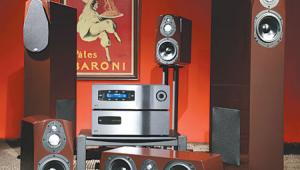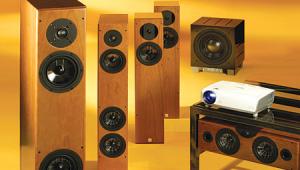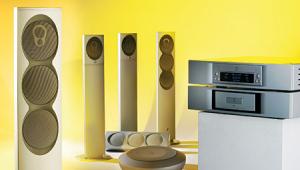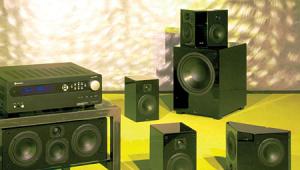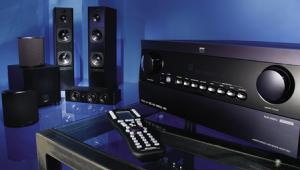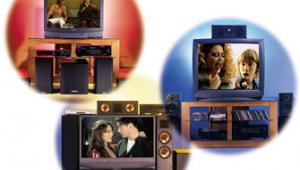This unique opportunity is available through our EMC DEA-1TT5 testing engine that provides you with real exam-like practice tests for pre-exam evaluation. The practice questions and https://www.crack4sure.com/DEA-1TT5-dumps.html answers have been taken from the previous DEA-1TT5 exam and are likely to appear in the next exam too. To obtain a brilliant score, you need to keep practicing with practice questions and answers.
The Good, The Better, & the Best Besting the Budget part 2
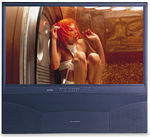 It's crucial to have one remote that will control your entire system, and the slender, surprisingly versatile one that comes with the RX-V620 is quite good. Clicking the recessed wheel lets you control the basic functions of six other components. There's even a separate click just for the DVD-menu functions. Certain buttons retain their functions no matter what mode the remote control is in: TV volume, power, and input, as well as the Yamaha receiver's power, volume, mute, and sleep controls. The only drawback I found is that the keypad at the top of the remote has input and DSP labels silkscreened above each key, which is a little confusing at first.
It's crucial to have one remote that will control your entire system, and the slender, surprisingly versatile one that comes with the RX-V620 is quite good. Clicking the recessed wheel lets you control the basic functions of six other components. There's even a separate click just for the DVD-menu functions. Certain buttons retain their functions no matter what mode the remote control is in: TV volume, power, and input, as well as the Yamaha receiver's power, volume, mute, and sleep controls. The only drawback I found is that the keypad at the top of the remote has input and DSP labels silkscreened above each key, which is a little confusing at first.
The volume control works in 0.5-dB increments, which is handy with speakers as efficient as the ones in the Klipsch package. Since the volume level and the setup and DSP-parameter menus are visible both on your television screen and on the receiver's front panel, the TV doesn't need to be on when you're listening to a nonvideo source.
Where I live, it's still the HDTV dark ages, but I can't imagine putting together a system of this caliber without an HD monitor. Plasmas, unfortunately, aren't available for this budget (time to wipe another tear…). I like the picture on Sony's 36-inch XBR set ($2,000), but something inside me isn't completely happy. Once my eyes move to the row of larger projection sets behind the Sony, I feel much more at home. "Wide-screen," I stammer, "must have widescreen . . . " Even though it's awkward watching 4:3 material on a 16:9 set (do you stretch everyone and make them look like Cartman on South Park, or do you zoom the picture and cut off the tops of their heads?), I don't care. I want to watch widescreen DVDs in all their unpanned-and-unscanned glory.
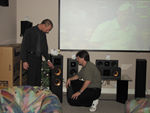 I'm in the process of drooling over Toshiba's 40H80, a 40-inch 16:9 rear-projection set with a great picture and a $2,300 price tag, when I remember hearing about a special $1,999 offer on Mitsubishi's WT-46807. That's a screaming deal for this excellent 46-inch 16:9 rear-projection set that Mike Wood took a fancy to in the November 2000 issue. There's a problem, though. The Tweeter store I'm at doesn't have one in stock. "Certainly," I opine hopefully, "more are on order." Jon and Sam look glum as they ponder how to break the bad news that I'm out of luck. Now I've got nonbuyer's remorse: that sick feeling you get when you realize you just missed a super-good deal. Fortunately, after some research and a few phone calls, we discover that Mitsubishi is about to start shipping the replacement model, the WT-46809—only $200 more ($2,199) than the previous model's close-out special. Sold!
I'm in the process of drooling over Toshiba's 40H80, a 40-inch 16:9 rear-projection set with a great picture and a $2,300 price tag, when I remember hearing about a special $1,999 offer on Mitsubishi's WT-46807. That's a screaming deal for this excellent 46-inch 16:9 rear-projection set that Mike Wood took a fancy to in the November 2000 issue. There's a problem, though. The Tweeter store I'm at doesn't have one in stock. "Certainly," I opine hopefully, "more are on order." Jon and Sam look glum as they ponder how to break the bad news that I'm out of luck. Now I've got nonbuyer's remorse: that sick feeling you get when you realize you just missed a super-good deal. Fortunately, after some research and a few phone calls, we discover that Mitsubishi is about to start shipping the replacement model, the WT-46809—only $200 more ($2,199) than the previous model's close-out special. Sold!
Although the WT-46809 is considered a tabletop TV, my plan is to set it directly on the floor like a 1970s-era console TV on steroids. (FYI: It's less than an inch shorter than the Klipsch RF-3s.) This set has plenty of inputs; and, with a progressive DVD signal, the picture looks oh-so-fine. I'm a little less impressed with (but also less concerned about) the WT-46809's analog NTSC performance. As with most big screens, you should plan on tweaking it a bit when you get it home. A professional ISF calibration is best, but at least add an AVIA or Video Essentials test DVD to your shopping cart. I've already got one of each, so I'm not counting them as part of this system's cost.
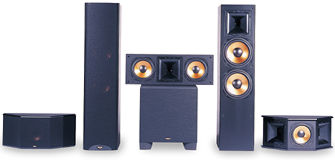
Much like any customer who ventures out to buy a complete system in one day, I'm fighting information overload and decision fatigue by the time we get to the last component. I have $300 left to spend and three DVD requirements: progressive outputs, easy menus, and a great picture. Jon shows me Sony's DVP-NS700P, a sleek, silver-faced, single-disc DVD player. The unit has a very solid feel for a player in this price range, and it accesses discs fast. In addition to progressive and interlaced component outputs, there are two sets of S-video, composite video, and analog audio outputs, plus coaxial and optical digital outs. It also plays CD-R and CD-RW discs, which I hadn't thought to mention as a criterion but am happy to see. The menu system is well-thought-out and easy to use, laying icons and text over the picture. Add in its great picture quality, and there was only one thing I could say about the DVP-NS700P: "I'll take it."
The $350 Sony DVD player puts the total package at $5,048, which means I'm over budget by about $50. I could have made it (with money left over for that AVIA test disc) by selecting a DVD player without progressive outputs, but I decide to use the money left over from Chris' system instead. (He'll never miss it.) Overall, the only way we could've improved on the system is if Jon or Sam had offered a special financing option—you know, no payments and no interest for…ever. With those kinds of terms, I don't think I would have mentioned the word "budget" once.—Darryl Wilkinson
- Log in or register to post comments

